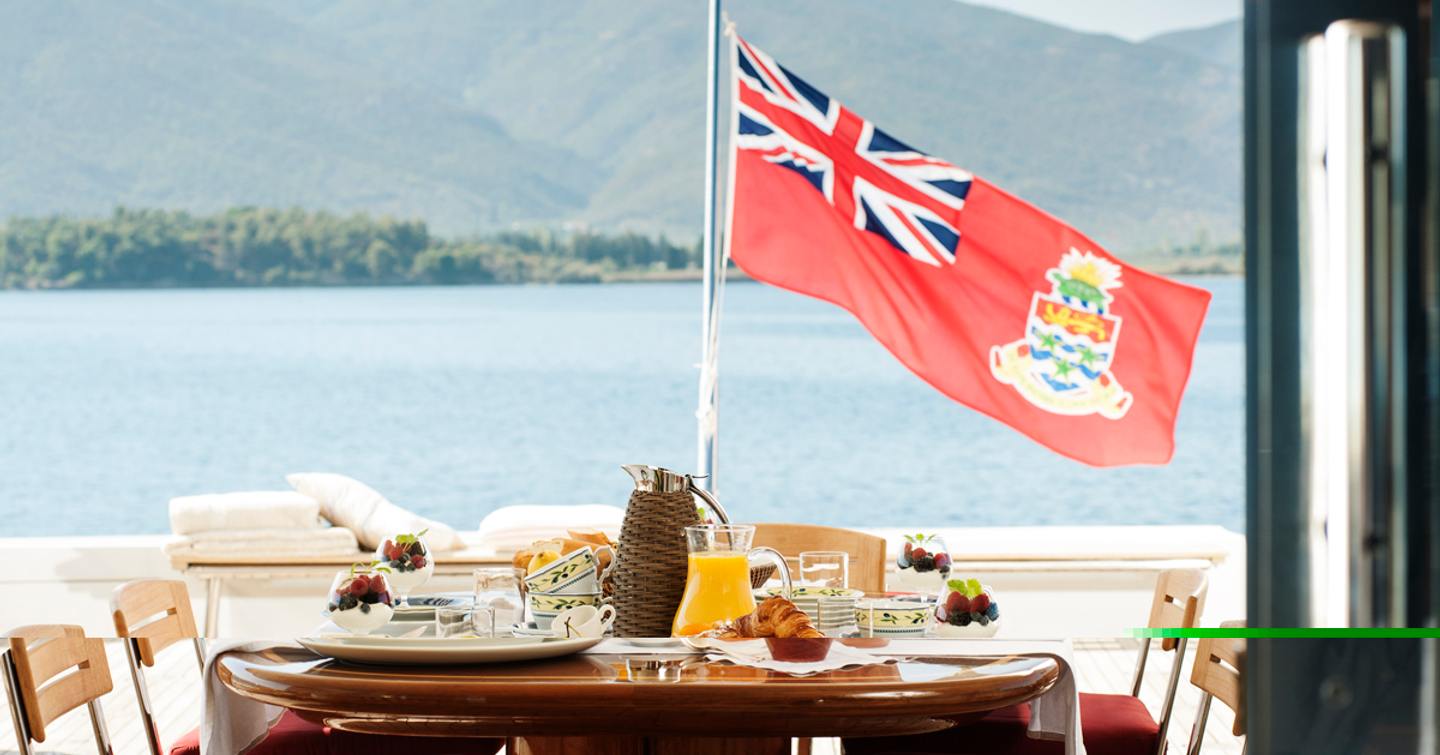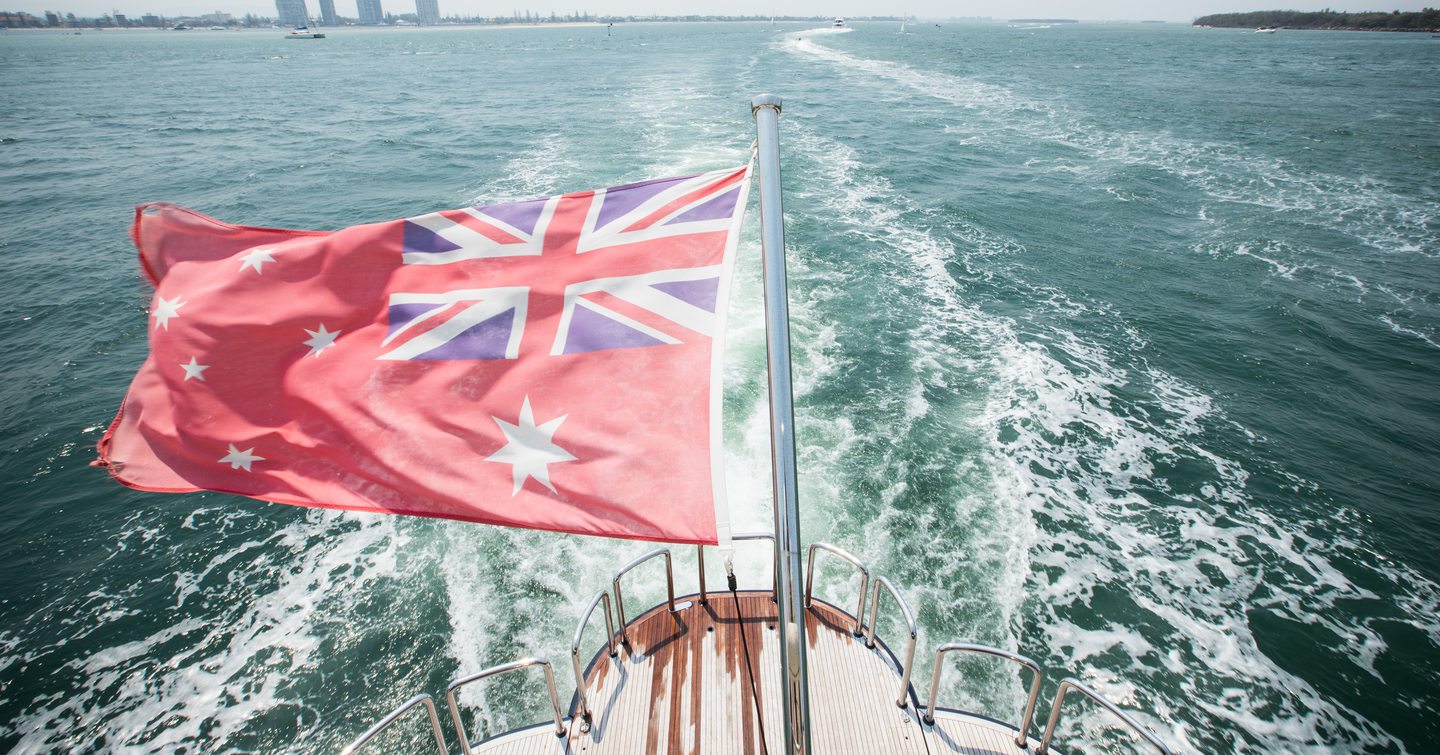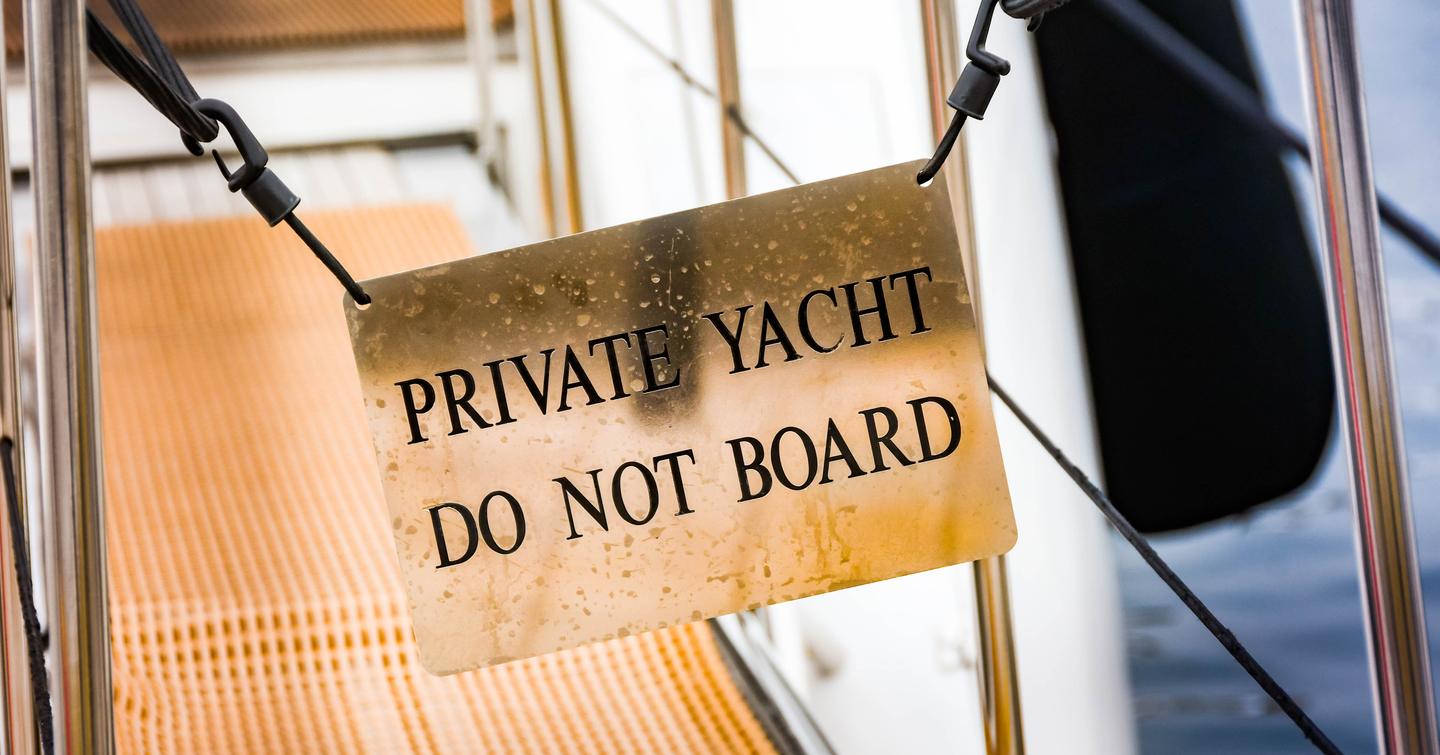Buying one of the world’s biggest yachts involves significant complexities, including decisions on ownership, private or commercial use, registration, and flag state. With industry-standard contracts in play, this guide serves as your compass, helping you navigate the journey from the initial handshake to securing the keys.
As an installment in our series delving into the legalities, rules, and regulations of superyacht ownership, this article turns its focus to the intricacies of the sales process and associated paperwork.
Ownership and Flagging
Prior to engaging in negotiations, prospective yacht buyers should be well-versed in their desired ownership structure and flag state registration. These choices are significantly influenced by factors such as the intended usage of the yacht for private or commercial charter purposes, the buyer's nationality, and the planned global location for the yacht.
It's advised to understand how the selected ownership framework and flag state can affect the tax and fiscal implications of ownership before entering into purchase negotiations.

Ownership Structure
Corporate ownership of a yacht allows for an efficient and flexible structure, often preferred for its liability protections and potential tax advantages. This arrangement permits businesses or entities to own and manage yachts, ensuring smoother operations and easier asset management.
Typically, high-value yachts are held under Special Purpose Vehicles (SPVs). SPVs are legal entities formed for a specific, limited, or temporary purpose and can be established solely for yacht ownership, devoid of other assets or liabilities.
They serve as a protective mechanism by legally separating the assets and liabilities of the SPV from the parent company, or the Ultimate Beneficial Owner (UBO). This provides a degree of security and limits the potential impact of risks on the parent company's, or owners', overall finances.
Nonetheless, it's worth noting that smaller yachts, under 24m, are commonly owned by individuals.
Explore our comprehensive guide to corporate ownership through the link below.
Flagging
An early determination crucial to the yacht ownership process is the selection of the vessel's flag state. According to international maritime law, yachts must be registered under a country's shipping registry to navigate internationally or engage in commercial activities.
The regulations set by the chosen flag state will oversee various aspects of yacht operations, encompassing safety protocols, crewing requirements, training standards, commercial certifications, and ship finance.

The reputation of the chosen flag, its ease of use, and the safety standards it imposes will impact the owner’s use of the yacht. Care should be taken to ensure that the yacht’s registration fits with the owner's intended operations.
Additionally, the ownership and registration structure of the yacht can impact its tax treatment. Specialist fiscal advice should be sought prior to entering into any ownership structure or registering the yacht with a flag state.
Explore our comprehensive guide to flag states through the link below.
The Contract
The primary objective of any negotiation is to attain a mutual agreement, culminating in the execution of a signed contract. Although industry-standard templates often facilitate this process, specialized brokers and their legal teams may opt for custom contracts. It is advisable for both parties involved in the negotiation to seek expert legal counsel.

- The Worldwide Yacht Brokers Association MYBA
MYBA The Worldwide Yachting Association was founded in 1984 and is an international professional organization with both corporate and individual members. MYBA is the creator of one of the industry’s most respected and widely used contracts in yacht sales, the MYBA Sales & Purchase Agreement (MoA). The MoA, and its associated documents, are regularly updated as regulations and the global market change and can be considered a safe contract template to follow. - The International Yacht Brokers Association IYBA
Formerly known as the Florida Yacht Brokers Association, the organization rebranded as IYBA in 2016, maintaining its core mission of representing yacht brokers in the United States. Offering contracts akin to the previously mentioned MYBA form, the association tailors its agreements to the U.S. market, rendering them the preferred choice for all U.S. based transactions.
The Contractual Process
As with any contract, all parties must agree to its terms; these may be highly specific to the yacht and the overall deal.

The contractual process of buying a yacht typically involves several key steps:
Offer and Acceptance:
The buyer makes an offer, which is then accepted by the seller, leading to the formation of a contract.
Due Diligence:
The buyer engages marine professionals to conduct a thorough inspection of the yacht, including its condition, history, and legal status.
Purchase Agreement:
Both parties negotiate and sign a purchase agreement, outlining the terms and conditions of the sale, including the purchase price, deposit, and any contingencies.
Escrow and Deposit:
The buyer places a deposit into an escrow account, demonstrating their commitment to the purchase.
Closing and Bill of Sale:
The closing involves the finalization of the transaction, where the remaining balance is paid, and the transfer of ownership is completed, typically accompanied by the signing of various legal documents.
Let's take a look at each of the above in a little more detail.
Offer and Acceptance
First of all, the yacht must be free for sale. Almost every yacht sale and purchase contract, regardless of whether it's custom-made or industry-standard, incorporates a seller's warranty confirming two critical aspects: that the seller is the rightful owner of the yacht with the authority to sell it, and that the yacht will be devoid of any debts, claims, or encumbrances at the time of delivery, such as mortgages.
The buyer may be required to demonstrate their financial capability to proceed with the transaction. This step reassures the seller of the buyer's financial capability to complete the purchase. This may involve providing evidence of funds or obtaining a letter of credit from a financial institution.
Backed by the seller's warranty and the buyer's proof of financial capability, an offer is proposed, contingent upon surveys and thorough due diligence. The seller's acceptance of this offer is required to advance the contract process.
Due Diligence
The buyer typically ensures the yacht's condition through a sea trial and/or a condition survey, with the logistics agreed upon in the contract. If any defects are identified after the trials or surveys, the contract usually grants specific buyer rights, such as the option to reject the yacht or request the seller to rectify any issues.
The MYBA MoA affords the buyer an unconditional right to reject the yacht after the sea trial, whereas rejection post the condition survey is contingent upon the identification of operationally compromising or unseaworthy 'defects.'
To streamline the process, the sea trial generally precedes the condition survey, ensuring the buyer's satisfaction before commissioning a marine surveyor. The contract must clearly stipulate the party responsible for the costs of the sea trial and condition survey, typically falling on the buyer, who is also obliged to insure the yacht during these assessments.
Marine surveyors, possibly accompanied by a legal team, will scrutinize the vessel's documentation to ensure the accuracy of the paperwork before progressing further down the route to the final handshake.
If the yacht is sold as VAT-paid or with import duty accounted for, it is at this stage that the seller must provide documented evidence of such duty and tax accounting.
Purchase Agreement
The purchase agreement stage of the yacht buying process entails a comprehensive legal contract that details the terms and conditions of the sale. This agreement will typically include details on the agreed purchase price, the conditions of the sale, any contingencies, and the obligations of both the buyer and the seller.
Additionally, it may encompass provisions for the transfer of ownership, warranties provided by the seller, and any post-closing responsibilities.

The purchase agreement outlines the framework within which the yacht transaction will be executed, ensuring clarity and protection for both parties involved.
Escrow and Deposit
The escrow and deposit stage in the yacht buying process involves the buyer placing a deposit into an escrow account, demonstrating their commitment to the purchase.
This deposit serves as a form of security for the seller, guaranteeing the buyer's serious intent to proceed with the transaction. The escrow account, typically managed by a neutral third party, safeguards the funds until the closing of the deal, providing a level of assurance for both the buyer and the seller.
The deposit amount and a time limit on the funds being received will be specified in the purchase agreement.
Bill of Sale
The bill of sale is a legal document that serves as evidence of the transfer of yacht ownership from the seller to the buyer. It outlines the terms and conditions of the sale, including the official details of the vessel, the agreed-upon purchase price, the date of the transaction, and the names and signatures of both the buyer and the seller, complete with witnesses.
It is this document that is required for establishing the new owner's legal rights to the yacht and serves as a key component in the transfer of ownership process.

Protocol of Delivery and Acceptance
The protocol of delivery and acceptance in yachting is a document that marks the formal handover of the yacht from the seller to the buyer.
It will outline the specific terms and conditions agreed upon by both parties for the transfer of ownership and typically includes details such as the condition of the yacht at the time of delivery, in addition to any remaining obligations to be fulfilled by either party.
It also serves as evidence of the time, date, and location of the yacht's delivery. The document's significance lies in the fact that the delivery location directly influences the tax treatment of the transaction.
Completion and the Final Balance

On the designated completion date, the involved parties usually conduct a completion meeting, often held via telephone, after ensuring the safe arrival of the yacht at the agreed delivery location.
The final balance is typically handed over during the completion meeting after the parties have verified the presence and accuracy of the contractual documents.
Post Closing Obligations
Post-closing obligations following the purchase of a yacht often include tasks such as transferring insurance, registration, and other related paperwork, to ensure the smooth transition of ownership. Additionally, it may involve settling any outstanding financial obligations. All obligations should be done in a timely manner.

